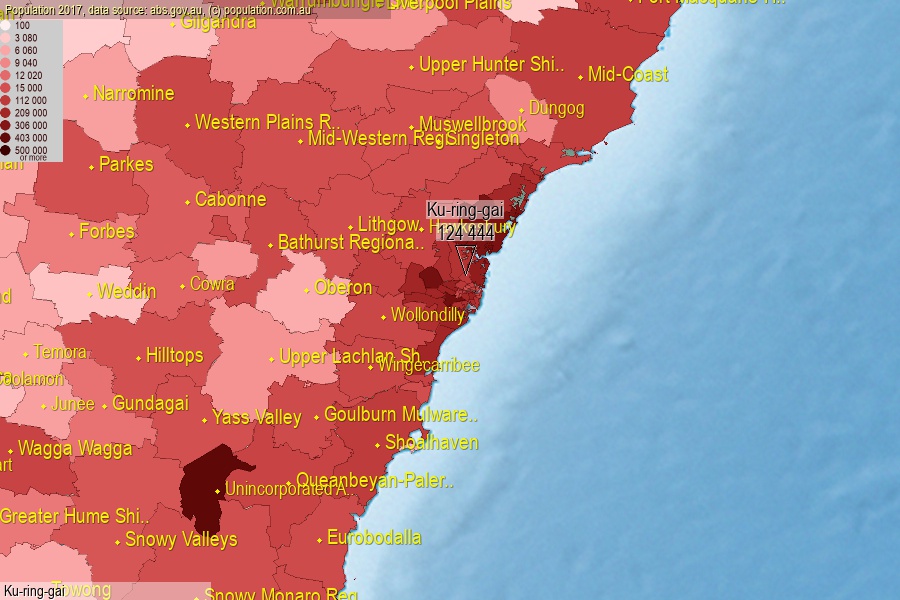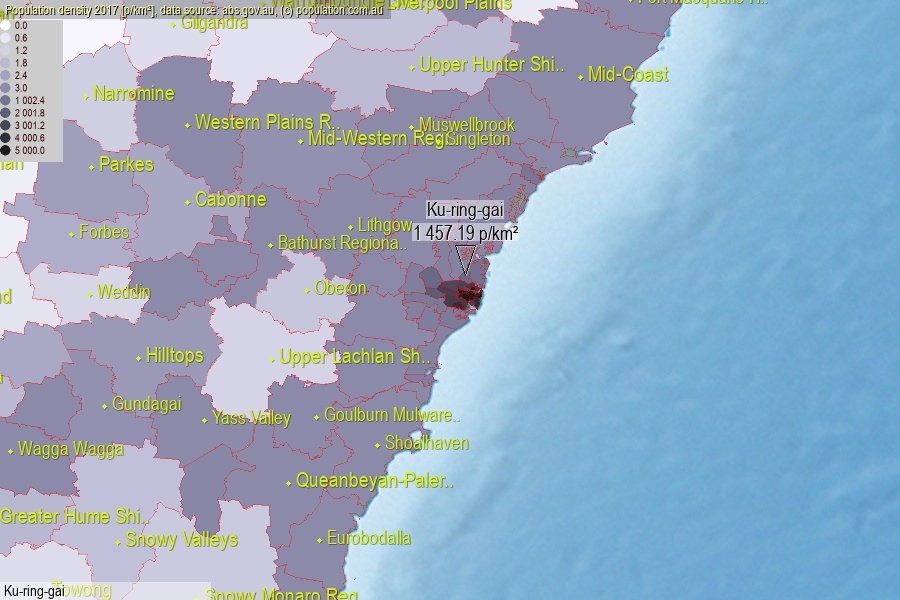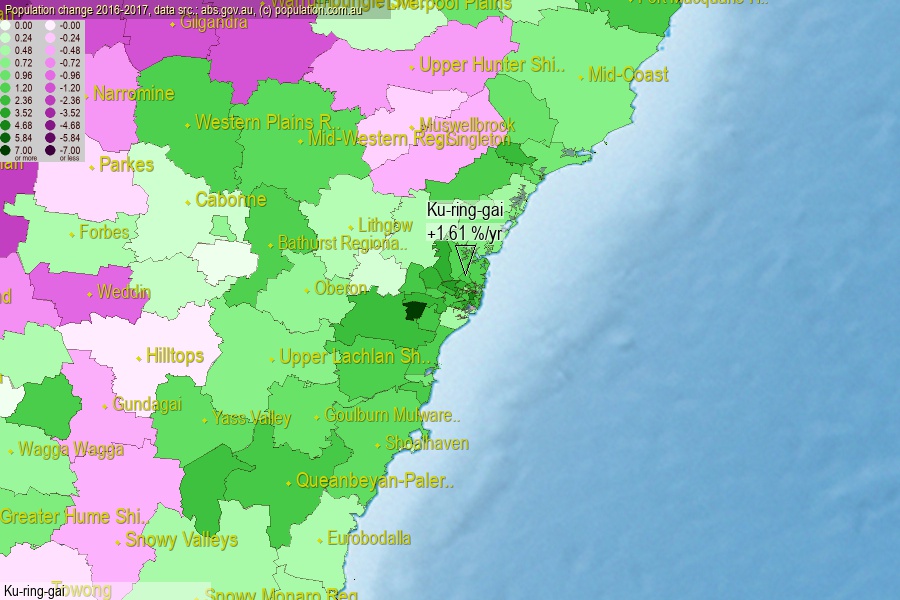 population.com.au
population.com.auLast official estimated population of Ku-ring-gai Area (as Local Government Area) was 124 444 people (on 2017-06-30)[2]. This was 0.50% of total Australian population and 1.564% of NSW population. Area of Ku-ring-gai is 85.40 km², in this year population density was 1 457.19 p/km² . If population growth rate would be same as in period 2016-2017 (+1.61%/yr), Ku-ring-gai population in 2025 would be 141 407. [0]



Click to enlarge. Ku-ring-gai is located in the center of the images.
Population [people], population density [p./km²] and population change [%/year] [2]
[1996-2001] +0.30 %/Y
[2001-2002] -0.17 %/Y
[2002-2003] -0.21 %/Y
[2003-2004] -0.68 %/Y
[2004-2005] -0.90 %/Y
[2005-2006] -0.40 %/Y
[2006-2007] +1.05 %/Y
[2007-2008] +2.30 %/Y
[2008-2009] +2.30 %/Y
[2009-2010] +1.97 %/Y
[2010-2011] +1.74 %/Y
[2011-2012] +1.51 %/Y
[2012-2013] +1.60 %/Y
[2013-2014] +1.40 %/Y
[2014-2015] +1.22 %/Y
[2015-2016] +0.95 %/Y
[2016-2017] +1.61 %/Y
[0] Calculated with linear interpolation from officially estimated population
[1] Read more about LGA and Australian Statistical Geography Standard (ASGS) on abs.gov.au
[2] Population data from Australian Bureau of Statistics (Population and density: 2017; change: 2016-2017)
[3] Digital Boundaries: Australian Statistical Geography Standard (ASGS) 2016.